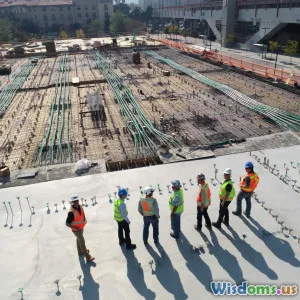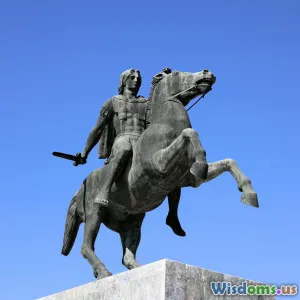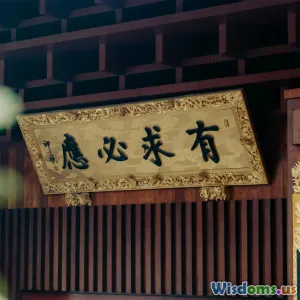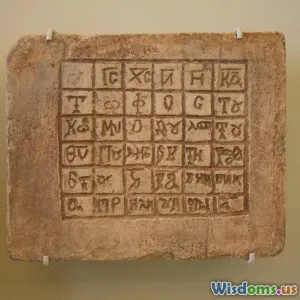
How Rome Mastered Roads to Dominate the Ancient World
8 min read Explore how Roman road engineering fueled their empire's growth and military dominance. (0 Reviews)
How Rome Mastered Roads to Dominate the Ancient World
The Roman Empire is celebrated for its formidable military, architectural marvels, and sophisticated governance, but one of the less visibly glamorous—yet profoundly transformative—achievements lies right beneath ancient boots and chariots: its road system. For centuries, Rome crafted a road network so advanced and extensive that it sustained the empire’s expansion, entrenched control over vast territories, and facilitated economic vitality.
This article explores the extraordinary mastery behind Roman road construction and maintenance, examines the strategic and economic impacts of the road system, and highlights the lasting legacy that still shapes infrastructure today.
The Introduction: Why Roads Were the Lifeblood of Rome
In 312 BCE, the Via Appia, Sicily’s Via Traiana, and dozens of other roads began to network the Italian peninsula. For Rome, roads were far more than simple paths; they were the arteries pumping life into the empire. Roman roads enabled rapid troop mobilization, efficient trade routes, and cohesive communication across provinces.
The famous Roman saying "All roads lead to Rome" embodied a profound truth—every major road radiated from the capital, binding distant regions into a single imperial whole. But how did Rome master such an engineering feat, centuries before modern technology, and why was it so essential to Roman dominance?
Engineering Excellence: The Craft Behind the Roads
Innovative Construction Techniques
Roman engineers pioneered methods that balanced durability with speed. A typical Roman road involved several layers, ingeniously designed for drainage and longevity:
- Statumen: A base of large stones laid for foundation strength.
- Rudus: A middle layer of smaller stones mixed with cement-like materials.
- Nucleus: Finest gravel or sand for a smooth sub-base.
- Summa Crusta: Paving stones, often polygonal or rectangular slabs fitted tightly with precision.
Roadbeds varied in width—commonly around 4.1 to 6 meters—wide enough to allow two-way chariot traffic, facilitating efficient movement.
Strategic Use of Materials and Terrain
Romans analyzed local materials and terrain, constructing roads with a keen sense of geography. Where possible, they tunneled through hills or built causeways over marshlands. The Milvian Bridge example near Rome showcases advanced knowledge in bridge building essential for maintaining road continuity.
In mountainous areas, engineers minimized gradients to ease transport, while roads in flat terrains followed straight lines to cut travel times. The positioning ensured roads were resilient to floods and weather extremes.
Milestones and Road Markings
To assist travelers and military units, Romans installed milestones (milliaria) every Roman mile (~1,480 meters). These markers indicated distances and sometimes recorded the sponsoring emperor, providing a form of ancient GPS and establishing imperial presence.
Strategic Purposes: Military, Administration, and Economy
Military Mobility and Control
Rome’s military success depended heavily on logistics. During campaigns, roads allowed legions to quickly traverse hostile territories or reinforce vulnerable frontiers. The swift deployment achieved along roads like Via Egnatia was pivotal during wars against Macedonia and Parthia.
According to historian Stephen Edwards, "Without roads, the Roman armies would have been strangled by distance and logistics." The ability to march tens of miles quickly gave Rome a strategic edge unparalleled by contemporaries.
Administrative Cohesion Across the Empire
Governance of a sprawling empire spanning three continents required incessant communication. Roads expedited the movement of officials, messages, tax collectors, and judicial forces to remote provinces.
Imperial couriers boasted speeds of up to 75 miles per day using relay stations known as 'mutationes' along the roads. This network maintained imperial authority and stability throughout diverse cultures and geographies.
Economic Integration and Trade Expansion
Roman roads massively reduced transportation costs, boomed trade routes, and integrated regional economies. From olive oil in Spain to grain from Egypt, goods flowed across the empire with unprecedented regularity.
Archaeological finds near Roman roads reveal bustling market towns and way-stations, fueling economic life. Cornelius Tacitus, the Roman historian, noted that roads "created prosperous cities and connected every corner with the heartbeat of trade."
Maintenance and Legacy
Legal and Administrative Framework for Maintenance
Roads required constant upkeep. The Roman legal framework obliged local communities and provinces to maintain roads and facilities. Engineers known as 'curatores viarum' oversaw repairs. Emperor Augustus famously established more systematic standards ensuring sustainability.
Impact on Future Infrastructure
The design ideas and infrastructure standards from Roman roads influenced medieval and modern road construction globally. Many modern European routes follow Roman pathways, testifying to their intuitive engineering. The endurance of roads like Via Appia, parts of which are still in use, signals engineering brilliance that transcends epochs.
Engineers today still study Roman techniques in durability and slope management, as they offer valuable lessons in cost-effective road-building.
Conclusion: The Road Beneath Roman Power
Rome’s mastery of roads was not merely an engineering accomplishment but a strategic triumph that welded its empire together. The roads were integral to military expeditions, administrative governance, and vibrant commerce. Each stone layer laid understood not only the physical landscape but geopolitical ambitions.
By transforming challenging terrains into smooth pavements of empire, Romans paved a path to centuries of dominance and a legacy enduring well beyond the ancient world. Modern infrastructure owes a debt to these meticulously constructed Roman routes—a reminder that our roads do more than connect places; they connect civilizations.
Rome’s roads invite us to appreciate how infrastructure shapes human history, inspiring continued innovation to conquer new frontiers in connectivity and unity.
References & Further Reading
- Laurence, Ray. The Roads of Roman Italy: Mobility and Cultural Change. Routledge, 1999.
- Millett, Martin. The Roman Empire and Its Roads. Thames & Hudson, 2005.
- Chevallier, Raymond. Roman Roads. University of California Press, 1976.
- Hypothetical insights from Alexander the Great’s logistics demonstrate contrasts with Roman efficiency.
Rate the Post
User Reviews
Popular Posts

















